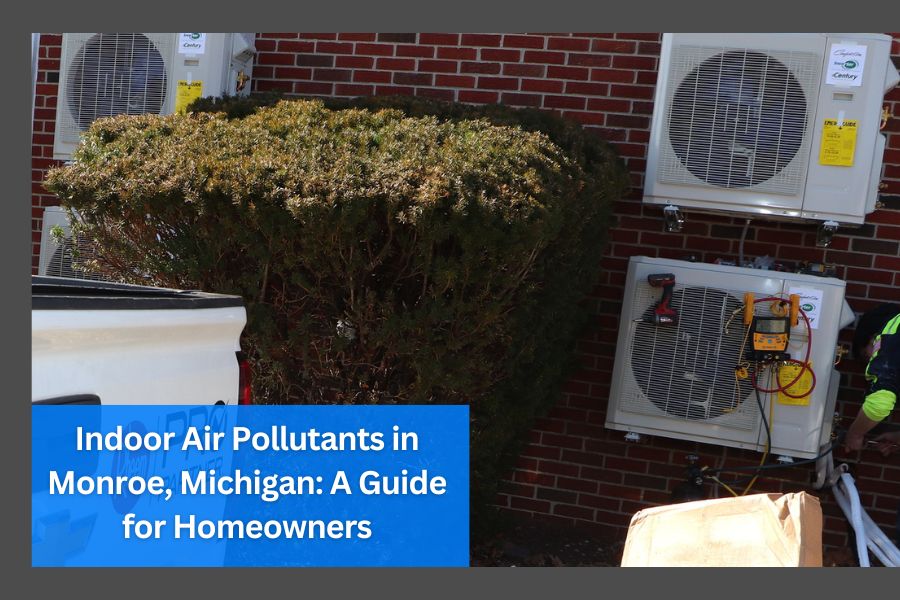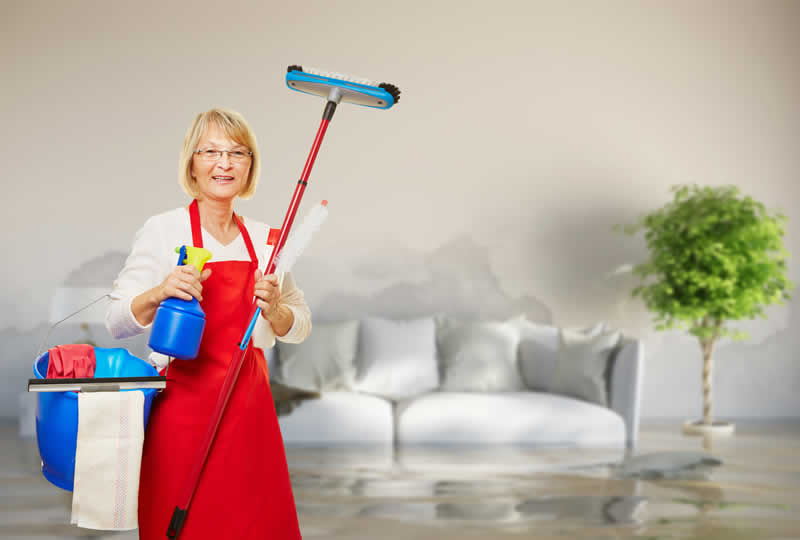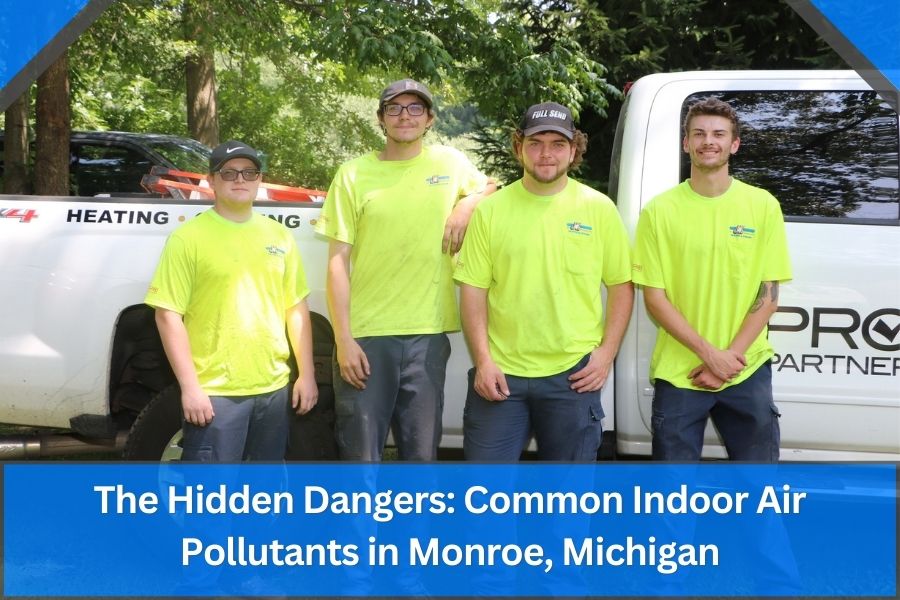Indoor air pollution, often overlooked, poses severe risks to health and well-being. In Monroe, common indoor air pollutants include volatile organic compounds (VOCs) from cleaning supplies, mold, tobacco smoke, radon, and carbon monoxide. These pollutants emanate from building materials, cleaning products, heating systems, and outdoor air seeping inside.
The health risks they present can range from minor irritations such as allergies and headaches to severe issues like respiratory diseases and heart conditions and, in extreme cases, can even be fatal. Understanding these risks and implementing measures to improve indoor air quality in your Monroe, Michigan, home is paramount in ensuring a safer living environment.
- Indoor Air Pollutants in Monroe, Michigan: A Guide for Homeowners

Indoor Air Pollutants in Monroe, Michigan: A Guide for Homeowners
The following sections will dive deeper into these common indoor air pollutants. We’ll discuss their specific sources within your home, their potential health effects, and the steps you can take to mitigate their presence. Learn about Volatile Organic Compounds (VOCs), Mold, Tobacco Smoke, Radon, and Carbon Monoxide.
Common Indoor Air Pollutants in Monroe, Michigan
Volatile Organic Compounds (VOCs)
Volatile Organic Compounds, or VOCs, are gases emitted from certain solids or liquids. In Monroe, familiar sources of VOCs include paints, cleaning supplies, pesticides, building materials, and office equipment such as copiers and printers. For instance, when you open a can of color, the pungent smell you notice is the VOCs being released into the indoor air. Prolonged exposure to high levels of VOCs can cause eye, nose, and throat irritation, frequent headaches, nausea, and damage to the liver, kidney, and central nervous system.
Mold
Mold is a fungus that grows in damp and poorly ventilated areas. It could lurk in your bathroom, kitchen, or basement. Consider a scenario where a pipe leaks in your basement and is left unattended; it could create a perfect environment for mold growth. Mold exposure can lead to health issues such as allergic reactions, asthma attacks, and other respiratory complaints.
Tobacco Smoke
Tobacco smoke is another common indoor air pollutant. It’s not just about people smoking in the house; it can also seep in from a neighboring apartment or outside. Secondhand smoke, as we know, carries more than 7,000 chemicals, many of which are toxic and can cause cancer. It can lead to severe respiratory problems, heart disease, and lung cancer among non-smoking adults. Children exposed to secondhand smoke are at risk of sudden infant death syndrome (SIDS), acute respiratory infections, and more.
Radon
Radon is a radioactive gas from the natural decay of uranium found in nearly all soils. It typically moves up through the ground and into your home through cracks and other holes in the foundation. For example, you might have a house built on soil with natural uranium deposits. Radon exposure poses a significant risk as it is the second leading cause of lung cancer after smoking.
Carbon Monoxide
Carbon monoxide (CO) is a colorless, odorless gas produced by burning carbon material. In a residential setting, familiar sources of carbon monoxide include unvented kerosene and gas space heaters, leaking chimneys and furnaces, and gas stoves. For example, using a gas stove in a stuffy kitchen can raise carbon monoxide levels. Exposure to CO can cause sudden illness or death, particularly in enclosed or poorly ventilated areas.

How Indoor Air Quality Affects Health
Poor indoor air quality can significantly impact health, ranging from short-term effects like irritation of the eyes, nose, and throat to long-term consequences such as respiratory diseases and cancer.
The Importance of Professional Air Quality Testing
Professional air quality testing is critical to achieving a healthier indoor environment. While do-it-yourself kits are available in the market, professional testing offers a more accurate and thorough analysis of the various pollutants in your indoor air.
Professionals use specialized equipment and techniques to detect and quantify the levels of pollutants like VOCs, mold, radon, CO, and tobacco smoke. These tests can identify potential problem areas in your home that may be difficult to detect otherwise, such as concealed mold growth or radon gas seeping through foundation cracks.
Moreover, a professional air quality testing service can provide tailored advice on mitigation strategies based on the specific pollutants found in your home. This could include changes in ventilation, suggesting air purifying devices, or recommending professional remediation services for severe issues like radon or mold removal.
J&K Heating and Cooling: Your Trusted Partner in Ensuring Clean Indoor Air
Choosing to prioritize the quality of your indoor air is an investment in your household’s health and long-term well-being. Don’t let invisible pollutants compromise the comfort and safety of your indoor environment. Contact J&K Heating and Cooling today at 734-587-3184 – your trusted partner in ensuring clean, healthy air in your home. Their team of experienced professionals is ready to help you breathe easier and live healthier. Take the first step towards safeguarding your indoor environment today for a healthier tomorrow.

Comments are closed.